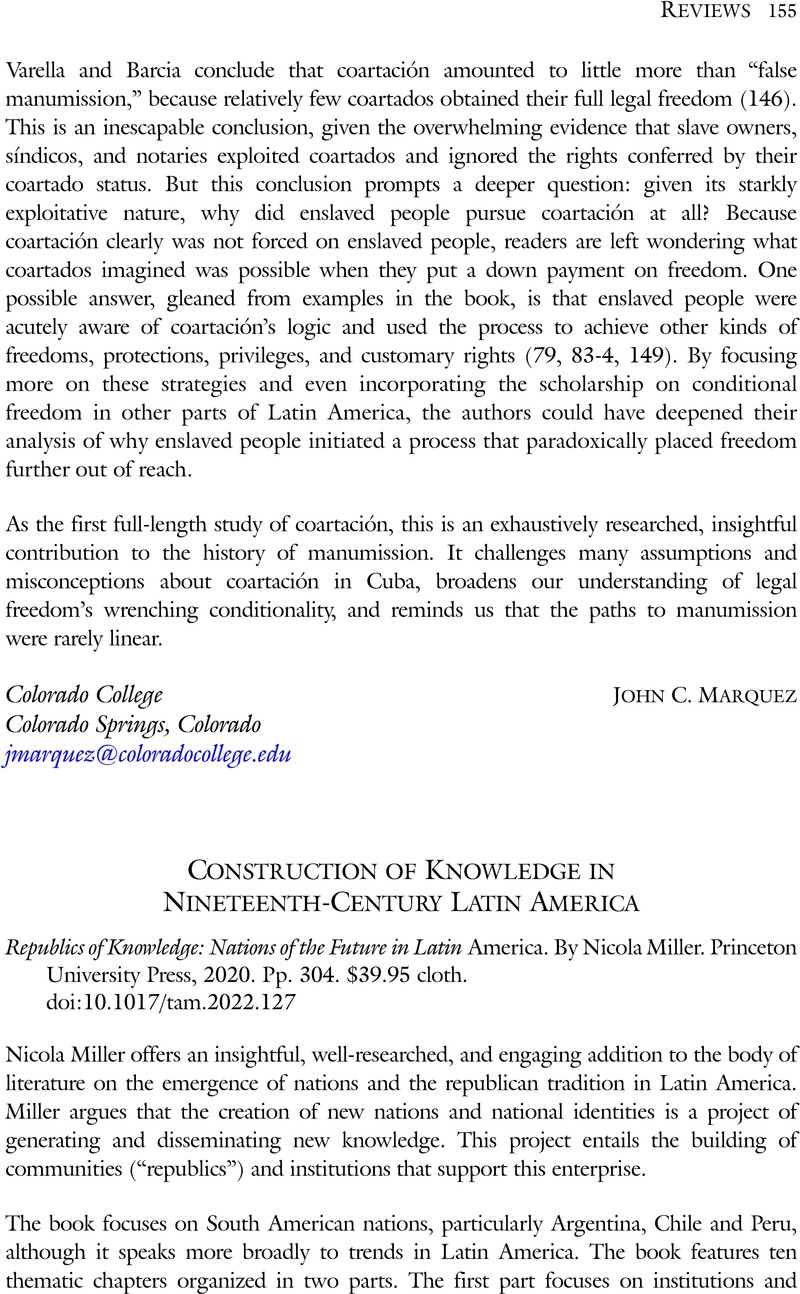No CrossRef data available.
Article contents
Construction of Knowledge in Nineteenth-Century Latin America - Republics of Knowledge: Nations of the Future in Latin America. By Nicola Miller. Princeton University Press, 2020. Pp. 304. $39.95 cloth.
Review products
Republics of Knowledge: Nations of the Future in Latin America. By Nicola Miller. Princeton University Press, 2020. Pp. 304. $39.95 cloth.
Published online by Cambridge University Press: 10 February 2023
Abstract
An abstract is not available for this content so a preview has been provided. Please use the Get access link above for information on how to access this content.

Information
- Type
- Book Review
- Information
- Copyright
- Copyright © The Author(s), 2023. Published by Cambridge University Press on behalf of Academy of American Franciscan History

